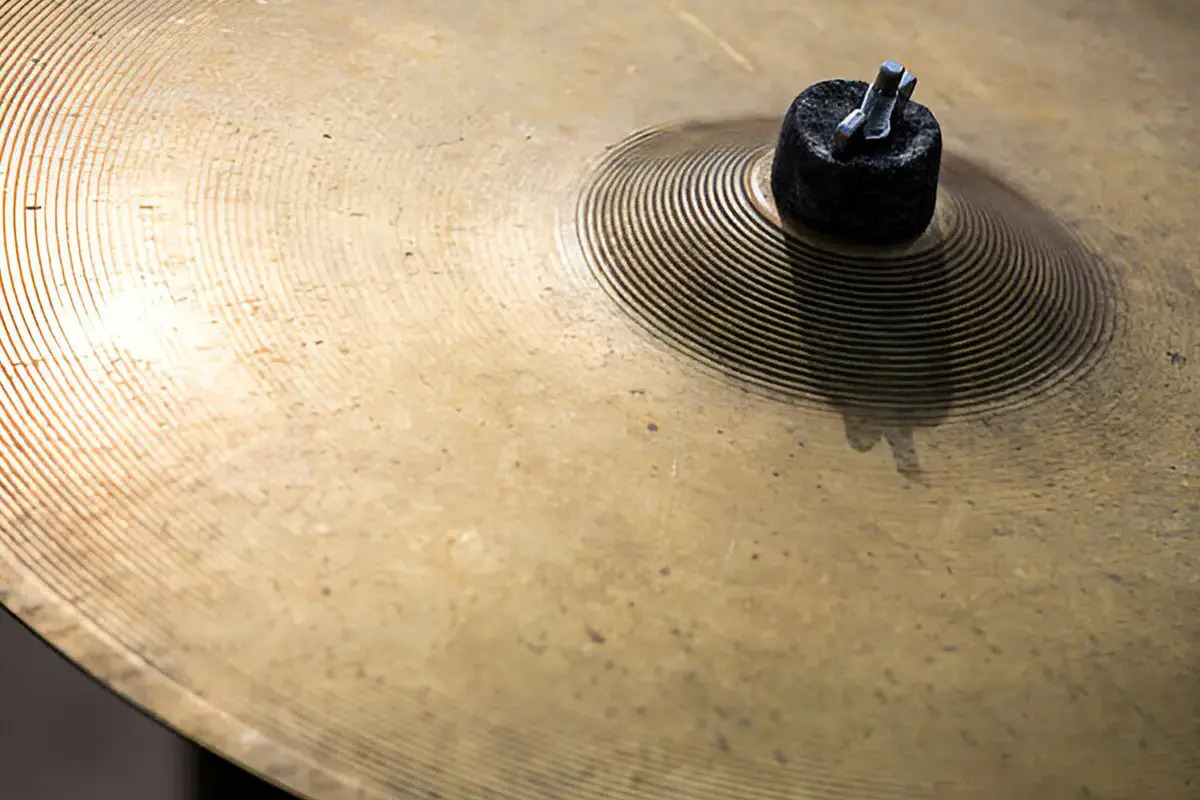
Cymbals are more than just shiny discs that drummers smash during a performance. They are crafted from various alloys, each bringing unique sounds and characteristics to the table. Ever wondered why some cymbals sound bright and cutting while others are dark and mellow? It all boils down to the metal mix used in their creation. From the popular B20 bronze to the versatile B8 alloy, each type has its own story. In this post, we'll dive into 40 fascinating facts about cymbal alloys that will make you appreciate these musical instruments even more. Ready to learn what makes your favorite cymbals sing? Let's get started!
Key Takeaways:
- Cymbal alloys, such as bronze and brass, determine the unique sound of cymbals. Different alloys create brighter or warmer tones, impacting the music genre and playing style.
- Modern technology allows for innovative cymbal alloys, such as hybrid blends and eco-friendly materials. Choosing the right alloy depends on playing style, genre, and personal preference.
What Are Cymbal Alloys?
Cymbals are essential in music, especially in genres like rock, jazz, and classical. The secret to their unique sound lies in the alloys used to make them. Here are some fascinating facts about cymbal alloys.
-
Bronze is the most common alloy used in cymbals. It consists mainly of copper and tin, providing a bright, cutting sound.
-
Brass cymbals are often used for beginners. They are cheaper and less durable but still offer a decent sound for practice.
-
B20 bronze is a popular choice among professionals. This alloy contains 80% copper and 20% tin, producing a rich, complex tone.
-
B8 bronze is another common alloy. It has 92% copper and 8% tin, resulting in a brighter, more focused sound.
-
Nickel silver cymbals are rare but unique. Made from copper, nickel, and zinc, they offer a distinctive, mellow tone.
The History of Cymbal Alloys
The history of cymbal alloys is as rich as the sounds they produce. Let's dive into some historical facts.
-
Cymbals date back to ancient civilizations. They were used in religious ceremonies in places like Egypt and Mesopotamia.
-
The Zildjian family revolutionized cymbal making. Founded in 1623, they developed secret alloy formulas still used today.
-
Turkish cymbals are renowned for their quality. The Ottoman Empire played a significant role in refining cymbal alloys.
-
European cymbal makers emerged in the 19th century. Companies like Paiste and Sabian began experimenting with different alloys.
-
World War II impacted cymbal production. Metal shortages forced manufacturers to innovate with new materials.
How Cymbal Alloys Affect Sound
The type of alloy used in a cymbal greatly influences its sound. Here are some facts about how different alloys affect the tone and quality.
-
Higher tin content creates a darker sound. Alloys with more tin, like B20, produce a warmer, more complex tone.
-
Lower tin content results in a brighter sound. B8 bronze, with less tin, offers a sharper, more cutting tone.
-
Nickel silver cymbals have a unique timbre. The addition of nickel gives them a softer, more mellow sound.
-
Brass cymbals are less resonant. They don't sustain as long as bronze cymbals, making them ideal for practice.
-
Hand-hammered cymbals offer a unique sound. The hammering process affects the alloy's structure, adding complexity to the tone.
Modern Innovations in Cymbal Alloys
Modern technology has allowed cymbal makers to experiment with new alloys and techniques. Here are some recent innovations.
-
Hybrid alloys are becoming popular. Mixing different metals can create unique sounds not possible with traditional alloys.
-
Laser cutting improves precision. This technology allows for more consistent cymbal shapes and sizes.
-
Computer modeling aids in design. Advanced software helps predict how different alloys will sound.
-
Eco-friendly alloys are emerging. Some manufacturers are exploring sustainable materials to reduce environmental impact.
-
Custom alloys are available. High-end cymbal makers offer personalized alloy blends for unique sounds.
Famous Cymbal Brands and Their Alloys
Several brands are known for their unique cymbal alloys. Let's look at some of the most famous ones.
-
Zildjian uses a secret alloy formula. Their B20 bronze is renowned for its rich, complex sound.
-
Sabian offers a variety of alloys. They use B20, B8, and even custom blends for different sound profiles.
-
Paiste is known for its innovation. They were one of the first to use B8 bronze extensively.
-
Meinl focuses on traditional techniques. They hand-hammer their cymbals, often using B20 bronze.
-
Istanbul Agop blends old and new. They combine ancient Turkish techniques with modern alloys.
Fun Facts About Cymbal Alloys
Cymbal alloys have some interesting quirks and trivia. Here are a few fun facts to wrap things up.
-
Cymbals can be recycled. Old cymbals can be melted down and reused to make new ones.
-
Different alloys age differently. Some cymbals sound better with age, while others may deteriorate.
-
Alloy composition affects weight. Heavier cymbals usually have more copper, while lighter ones have more tin.
-
Cymbal alloys can influence playing style. Drummers often choose cymbals based on how they respond to different playing techniques.
-
Some alloys are patented. Companies like Zildjian have patents on their specific alloy blends.
The Science Behind Cymbal Alloys
Understanding the science behind cymbal alloys can deepen your appreciation for these musical instruments. Here are some scientific insights.
-
Alloy composition affects hardness. Harder alloys produce a brighter sound, while softer ones offer a warmer tone.
-
Tin increases corrosion resistance. Adding tin to copper helps prevent the cymbal from tarnishing.
-
Nickel adds strength. Nickel silver alloys are more durable, making them less likely to crack.
-
Heat treatment alters sound. Heating and cooling the alloy can change its molecular structure, affecting the tone.
-
Alloy purity matters. Impurities in the metal can negatively impact the cymbal's sound quality.
How to Choose the Right Cymbal Alloy
Choosing the right cymbal alloy can be daunting. Here are some tips to help you make an informed decision.
-
Consider your playing style. Different alloys respond better to various techniques, so choose one that suits your style.
-
Think about the genre. Rock drummers might prefer brighter cymbals, while jazz musicians often opt for warmer tones.
-
Test before you buy. Always try out cymbals in person to hear how the alloy sounds.
-
Read reviews. Other drummers' experiences can provide valuable insights into different alloys.
-
Consult experts. Music store staff and professional drummers can offer advice tailored to your needs.
Final Notes on Cymbal Alloys
Cymbal alloys play a huge role in shaping the sound and quality of cymbals. From bronze to brass, each alloy offers unique characteristics that drummers can use to their advantage. Bronze cymbals are known for their durability and rich tones, making them a favorite among professionals. Brass cymbals, on the other hand, are more affordable and great for beginners. Understanding the differences between these alloys helps drummers make informed choices about their gear.
Remember, the type of alloy affects not just the sound but also the lifespan of the cymbal. Investing in the right alloy can make a big difference in your drumming experience. So next time you’re shopping for cymbals, keep these facts in mind to find the perfect match for your style and needs. Happy drumming!
Frequently Asked Questions
Was this page helpful?
Our commitment to delivering trustworthy and engaging content is at the heart of what we do. Each fact on our site is contributed by real users like you, bringing a wealth of diverse insights and information. To ensure the highest standards of accuracy and reliability, our dedicated editors meticulously review each submission. This process guarantees that the facts we share are not only fascinating but also credible. Trust in our commitment to quality and authenticity as you explore and learn with us.


